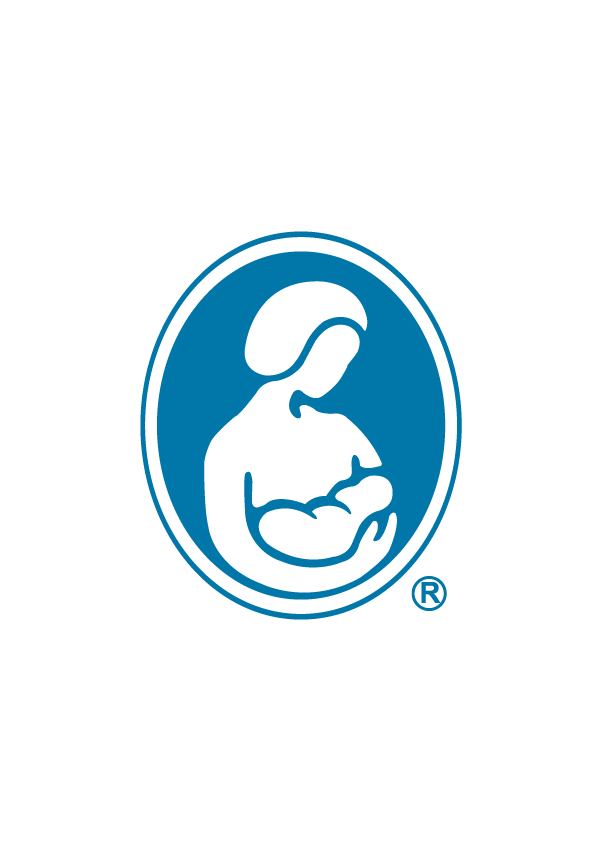免责声明:
以下的哺乳资源和链接不是源自或不代表国际母乳会,不过对您可能有用。
Translated by Xiao Bo and Lu Lu
Reviewed by Missy Wang (WABA Endorsement Person, LLLI Leader)
Daisy (LLLI Leader)
WABA celebrates World AIDS Day on 1 December. We join the “Hands Up Campaign”1 to support early testing, diagnosis and treatment of all people living with HIV (Human Immunodeficiency Virus) in order to maximise prevention of both horizontal and vertical transmission of HIV which can lead to the Acquired Immunodeficiency Syndrome (AIDS).
国际母乳喂养行动联盟(WABA))庆祝12月1日的世界艾滋病日。我们参加了“举手行动”来支持艾滋病病毒(HIV)携带者的早期测试、诊断和治疗,以最大限度地预防艾滋病病毒的水平或垂直传播。艾滋病病毒可导致获得性免疫缺陷综合征(AIDS)。
Approximately 1.9 million adults worldwide have become infected with HIV every year for at least the past five years2. HIV affects mainly sexually active adults. A woman can be horizontally infected by her male sexual partner and then her babies and children can be vertically infected during pregnancy, during birth, or through breastfeeding.
在过去的五年里,全世界每年至少有约190万成年人感染艾滋病病毒。艾滋病病毒主要影响那些有活跃性行为的成年人。女性可被她的男性性伴侣横向感染,然后她的婴儿和孩子可以在孕期、分娩或母乳喂养时被纵向感染。
Mothers living with HIV who adhere to their medications are recommended to breastfeed their babies exclusively for the first six months of life, followed by continued breastfeeding with appropriate complementary foods for up to two years or beyond3,4. Mixed feeding (combining breastfeeding with other foods and liquids) before six months of age has been shown to increase the risk of transmission through breastfeeding5,6. Replacement or formula-feeding increases the risk of mortality from infectious diseases and malnutrition7.
推荐携带艾滋病病毒的母亲在服用药物期间纯母乳喂养婴儿到六个月,然后继续母乳喂养并搭配适当辅食,直到婴儿两岁或者更久。在婴儿六个月大之前采用混合喂养方式(在母乳喂养的同时添加其他食物和液体),会使通过母乳喂养传播艾滋病病毒的风险有所增加。母乳替代品或配方奶喂养增加了因传染性疾病和营养不良而导致婴儿死亡的风险。
With increased coverage and improved medication regimens, rates of HIV transmission from mothers to infants have dramatically decreased. Since 1995, provision of anti-retroviral therapy (ART) to women living with HIV has prevented an estimated 1.6 million new paediatric HIV infections which would have been acquired through pregnancy, birth and breastfeeding. Well over a million infections (1.3 million) were prevented between 2010 and 2015. The largest decline was in the areas of the world previously worst affected, namely in eastern and southern Africa, where infections in infants fell three-fold, from 18% of infants in 2010 to 6% in 2015. By 2015, 91% of the 1.1 million women receiving antiretroviral medicines to prevent mother-to-child transmission were on lifelong antiretroviral therapy.
随着药物治疗方案的改善和推广,艾滋病病毒在母婴之间的传播率显著降低。 1995年以来,向携带艾滋病病毒妇女提供的抗逆转录病毒疗法(ART)有效预防了约160万例新生儿艾滋病病毒感染——他们原本可能在母亲怀孕、分娩或母乳喂养中被感染。2010年至2015年间,远超过100万(约130万)例感染得到预防。感染率下降幅度最大的区域是世界上曾经受影响最严重的地区,即非洲的东部和南部,在那里婴儿的感染率下降了三倍,从2010年的18%下降至2015年的6%。至2015年,为了防止艾滋病病毒的母婴传播,有110万妇女接受了抗逆转录病毒药物治疗,其中91%在接受终身抗逆转录病毒治疗。
Building on these findings, current global HIV and infant feeding policy has been designed to maximise HIV-free survival of infants and their mothers through routine early testing and prompt provision of ART. Pregnant women should have access to testing in early pregnancy and re-testing during late pregnancy and in the early postpartum period.5HIV-exposed infants should receive early and repeat testing at birth, 6, 10 and 14 weeks8. Current research shows conclusively that careful adherence to maternal ART regimens during pregnancy and breastfeeding greatly reduces vertical transmission of HIV; and that exclusive and continued breastfeeding significantly improves overall HIV-free survival of babies3, 4. It is now recommended that mothers living with HIV should receive lifelong ART which not only protects their own health and permits them to enjoy a normal life-span, but also suppresses viral levels in their blood, and in their breastmilk, to undetectable levels9.
基于这些发现,现阶段的全球艾滋病病毒与婴儿喂养政策要求通过做好母亲常规的早期检测和及时提供抗逆转录病毒治疗,让新生儿免受艾滋病病毒感染的可能性最大化。妇女怀孕后,应在其孕早期提供检测,并在其孕晚期和产后早期重新检测。曾暴露在艾滋病病毒下的婴儿应分别在出生、6周、10周和14周时接受早期及重复的检测。近期研究显示,在孕期和哺乳期间严格执行抗逆转录病毒药物方案的母亲,其艾滋病病毒的纵向传播显著降低;纯母乳喂养和持续母乳喂养显著提高了未受艾滋病病毒感染婴儿的存活率。推荐携带艾滋病病毒的母亲接受终生抗逆转录病毒治疗,这不仅可以保护她们自身的健康,使她们能享有平均寿命,还可以抑制她们血液及乳汁中的病毒水平至低于可检测出的程度。
WABA joins the Hands Up Campaign to support these life-saving initiatives. If the AIDS epidemic is to be ended by 2030, prevention efforts must be reinvigorated. With sufficient political will, further increases in child survival are within reach. In particular, all pregnant and breastfeeding women diagnosed with HIV, should be initiated on lifelong ART. Breastfeeding should be protected, promoted and supported for HIV-exposed babies. Furthermore the duration of breastfeeding should not be restricted. Improving women’s health so that they can continue to be vital and productive members of society, as well as care for their children adequately, is of crucial importance9.
国际母乳喂养行动联盟加入了“举手行动”来支持这些拯救生命的行动。如果想要在2030年之前终结艾滋病的流行,预防工作必须更加卓有成效。有了政治上的充分支持,未来儿童存活率的提高指日可待。特别应指出的是,所有在孕期和哺乳期被诊断出携带有艾滋病病毒的妇女,都应该接受终生的抗逆转录病毒治疗。对曾暴露在艾滋病病毒下的婴儿,其母乳喂养应得到保护、促进与支持。此外,不应限制对这些婴儿的母乳喂养期限。改善携带艾滋病病毒女性的健康至关重要,这样她们就能继续成为社会中有活力、有生产力的成员,同时也为她们的孩子提供更好的照顾。
Let’s all join hands to protect, promote and support breastfeeding for the best health outcomes for women living with HIV and their babies!!
让我们都来加入“举手行动”,保护、促进和支持母乳喂养,使携带艾滋病病毒的女性和她们的宝宝能拥有最佳的健康状况!
For more information about please see: What women need to know about breastfeeding in the HIV context.
希望了解更多信息,请阅读:《在有艾滋病病毒的环境中母乳喂养,女性应知道什么?》
References 参考文献:
1. UNAIDS Hands Up Campaign
2. UNAIDS 2016, Prevention Gap report
3. WHO. Guidelines on HIV and infant feeding 2010 – Principles and recommendations for infant feeding in the context of HIV and a summary of evidence. Geneva, World Health Organization, 2010.
4. WHO-UNICEF 2016, Guideline: Updates on HIV and Infant Feeding
5. Coutsoudis A, Pillay K, Spooner E, Kuhn L, Coovadia HM. Influence of infant-feeding patterns on early mother-to-child transmission of HIV-1 in Durban, South Africa: a prospective cohort study. South African Vitamin A Study Group. Lancet. 1999 Aug 7;354(9177):471-6.
6. Coutsoudis A, Pillay K, Kuhn L, Spooner E, Tsai W-Y, Coovadia HM for the South African Vitamin A Study Group. Method of feeding and transmission of HIV-1 from mothers to children by 15 months of age: prospective cohort study from Durban, South Africa. AIDS 2001;15:379-387
7. Coutsoudis A, Coovadia HM & Wilfert CM, HIV, infant feeding and more perils for poor people: new WHO guidelines encourage review of formula milk policies, Bulletin of the World Health Organization 2008;86:210–214.
8. Sherman G G. HIV testing during the neonatal period. Southern African Journal of HIV Medicine. 2015.
9. WHO 2016, Consolidated guidelines on the use of antiretroviral drugs for treating and preventing HIV infection: recommendations for a public health approach – 2nd ed. ISBN 978 92 4 154968 4
10. Understanding International Policy on HIV and Breastfeeding: a comprehensive resource
